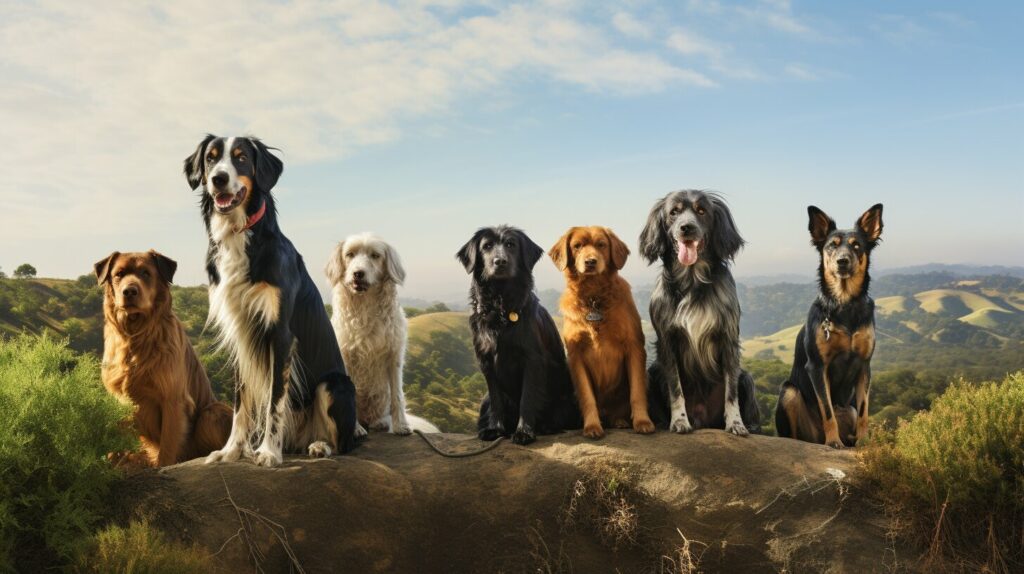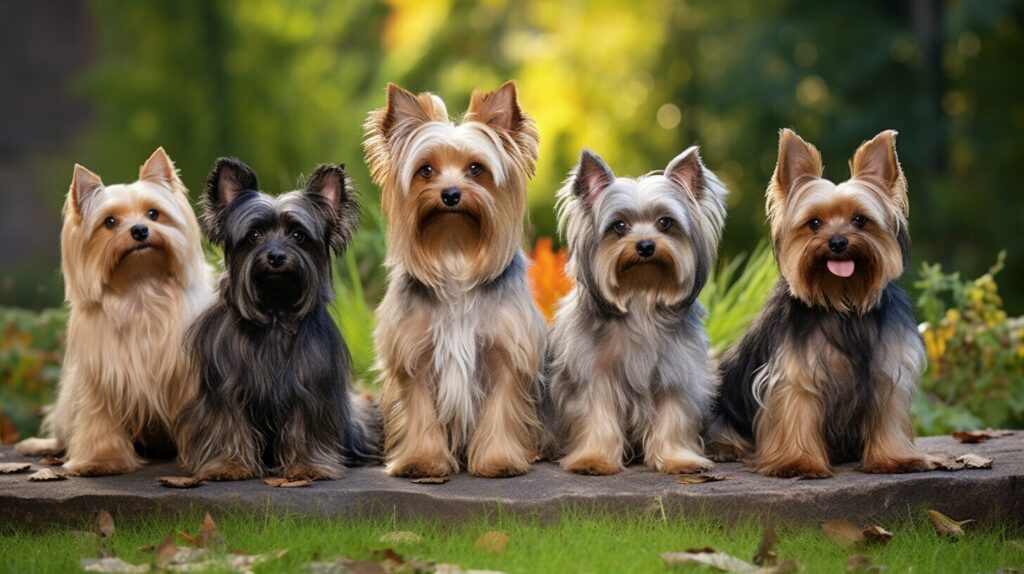If you’re a dog lover looking for a unique, charming, and loyal companion, you might want to consider getting a long-eared dog. With their adorable droopy ears and friendly personalities, long-eared dogs have been popular among dog enthusiasts for centuries. From hound dogs to spaniel breeds, long-eared dogs come in a variety of shapes, sizes, and temperaments, making them suitable for various lifestyles and living situations.
In this comprehensive guide, you’ll discover everything you need to know about long-eared dogs, from their unique features to their care requirements. You’ll learn about popular long-eared dog breeds, their versatility, training and exercise needs, grooming, health issues, and more. Whether you’re a first-time dog owner or a seasoned canine enthusiast, this guide will provide you with valuable insights and tips to help you care for your long-eared companion.
Key Takeaways:
- Long-eared dogs come in a variety of breeds, sizes, and temperaments.
- Long ears are a distinctive physical feature that contribute to a dog’s appearance and senses.
- Long-eared dogs are versatile and can be trained for various roles, from hunting to search and rescue to family pets.
- Regular grooming and care are essential for long-eared dogs, particularly in preventing ear infections and other health problems.
- When choosing a long-eared dog breed, consider factors such as size, energy level, and temperament that fit your lifestyle and preferences.
The Unique Features of Long-Eared Dogs
Long-eared dogs are a distinct group of breeds that are immediately recognizable by their characteristic droopy ears. These breeds typically have longer and wider ears than other dogs, which can vary in shape and texture depending on the breed. Some of the popular long-eared breeds include the Basset Hound, Bloodhound, Cocker Spaniel, and Beagle.
Their long ears serve a crucial function, protecting their sensitive ears from dirt, dust, and other debris, while also enhancing their incredible sense of smell. These breeds have a highly developed sense of scent, making them ideal for tracking and hunting.
The size and shape of long ears can differ greatly depending on the breed. For example, Basset Hounds have long, droopy ears that can reach up to 10 inches in length, while the Cavalier King Charles Spaniel has long, silky ears that are feathered with long hair.
Long-eared dogs also have unique features beyond their ears. Many breeds, such as the Bloodhound, have droopy jowls that enhance their sense of smell and add to their distinguished appearance. Additionally, some long-eared breeds are known for their big, soulful eyes that perfectly complement their floppy ears.
Popular Long-Eared Dog Breeds
If you’re considering adding a long-eared dog to your family, you have plenty of options to choose from. Here are a few of the most popular long-eared dog breeds:
| Breed | Origin | Temperament | Distinguishing Characteristics |
|---|---|---|---|
| Basset Hound | France | Friendly, laid-back, and affectionate | Short legs, long body, and droopy ears |
| Bloodhound | Belgium and France | Gentle, loyal, and determined | Large and wrinkled face, droopy ears, and strong sense of smell |
| Cocker Spaniel | England | Happy, energetic, and intelligent | Long ears and curly, silky fur |
Other popular long-eared breeds include the Cavalier King Charles Spaniel, Beagle, English Springer Spaniel, and many more. Each breed has its own unique personality, so it’s essential to research and choose a dog that will fit well with your lifestyle and family.
The Versatility of Long-Eared Dogs
Long-eared dogs are not just adorable companions; they are also highly versatile in various roles. They have exceptional senses of smell, hearing, and vision, which make them ideal for hunting, tracking, and search and rescue operations. In addition, their loyal and affectionate personalities make them great family pets.
Long-eared dogs can be divided into two categories: hound dogs and spaniel breeds. Hound dogs are known for their keen sense of smell and are often used for hunting small game like rabbits and foxes. On the other hand, spaniel breeds are known for their intelligence and are popular for their ability to retrieve game birds.
The Versatility of Hound Dogs
Long-eared hound dogs like the Basset Hound and Bloodhound are excellent hunters due to their superior sense of smell. Their floppy ears play an important role in trapping scents, allowing them to track prey with ease. They are also tenacious and determined, making them perfect for pursuing game through thick underbrush.
Aside from hunting, hound dogs are also suitable for detecting illegal substances, such as drugs and explosives. Their sense of smell is so sensitive that they can detect even the slightest trace of these substances, making them valuable assets in law enforcement and border control.
The Versatility of Spaniel Breeds
Long-eared spaniel breeds like the Cocker Spaniel and King Charles Cavalier are highly intelligent and well-suited for retrieving game birds. They have excellent memories and can learn to follow complex commands quickly. This makes them ideal for bird hunting, as they can retrieve fallen birds and bring them back to their owners without damaging them.
Aside from hunting, spaniel breeds are also popular as therapy dogs and family pets. Their calm and affectionate nature makes them great companions for children and seniors, while their trainability and intelligence make them suitable for helping people with disabilities.
Overall, long-eared dogs are some of the most versatile and multi-talented breeds around. Whether you are looking for a hunting partner, a therapy dog, or just a loving companion, long-eared dogs have something to offer for everyone.
Training and Exercise for Long-Eared Dogs
Long-eared dogs such as hounds and spaniel breeds are active and energetic, requiring regular exercise to maintain their health and happiness. As their owners, you need to provide them with adequate physical and mental stimulation to prevent boredom, destructive behavior, and obesity.
Training long-eared dogs can be challenging due to their strong hunting and scenting instincts, but with patience, consistency, and positive reinforcement, you can teach them basic commands and obedience skills. Consider enrolling your dog in obedience classes or seeking the help of a professional trainer to ensure effective training.
When it comes to exercise, long-eared dogs benefit from daily walks, runs, or hikes, depending on their age, breed, and physical abilities. Hounds, in particular, enjoy tracking scents and chasing prey, so letting them run in a safe and enclosed area can be a stimulating activity. Spaniels, on the other hand, enjoy retrieving games and swimming, which can also be fun and rewarding for them.
Remember to monitor your long-eared dog’s exercise intensity and duration, especially during hot or cold weather, as they are prone to overheating or hypothermia due to their floppy ears that may block air circulation and trap moisture. Make sure they have access to fresh water and adequate shade or shelter during outdoor activities.
Grooming Long-Eared Dogs
If you are a proud owner of a long-eared dog breed, you know that their floppy ears add to their charm and distinctive look. However, it is essential to understand that these ears require special attention and care to keep them healthy.
The long ears of these dogs can restrict airflow and trap moisture, leading to a buildup of wax, dirt, and bacteria. Consequently, they are prone to ear infections, which, if left untreated, can cause hearing loss or even spread to other parts of their body.
To prevent such issues, you should clean your dog’s ears regularly with a veterinarian-recommended solution. Gently wipe the inside of their ears with a soft cloth or cotton ball, being careful not to go too deep and damage the ear canal. You should also trim excess hair around the ear area to improve airflow and reduce the risk of infections.
In addition to ear care, long-eared dogs also require regular grooming to maintain their coat’s health and appearance. Brushing their coat a few times a week can help prevent matting and shedding. You may also need to bathe them occasionally, but avoid doing it too often as it can dry out their skin and cause irritation.
As with any other dog breed, long-eared dogs also require dental care, nail trimming, and routine check-ups with a veterinarian. These measures ensure that your furry companion is healthy and happy.
Health Issues Common in Long-Eared Dogs
If you own a long-eared dog breed, it’s important to be aware of potential health issues that may arise. These breeds are prone to certain conditions due to the unique shape and size of their ears. Here are some common health issues to look out for:
| Health Issue | Symptoms | Treatment |
|---|---|---|
| Ear infections | Shaking of the head, scratching at the ears, odor or discharge from ears | Antibiotics, ear cleaning, and proper grooming |
| Allergies | Skin irritation, itching, sneezing, coughing, and wheezing | Antihistamines, changes in diet, or allergy shots |
| Hearing problems | Difficulty responding to sounds, lack of alertness, or excessive barking | Medical intervention, such as surgery, hearing aids, or training techniques |
It’s crucial to keep your long-eared dog’s ears clean and dry to prevent infections. Check their ears regularly for signs of redness, swelling, or discharge, and seek veterinary care if necessary. Some dog breeds with long ears may also benefit from having their ears trimmed or pulled back to improve air circulation and reduce the likelihood of infection.
Overall, with proper care and attention, you can help ensure your long-eared dog stays healthy and happy for years to come.
Long-Eared Dogs in Pop Culture
Long-eared dogs have been a popular subject in various forms of media, from movies to books to art. Their unique physical features and charming personalities have made them enduring favorites among both creators and audiences.
Perhaps the most famous long-eared dog in pop culture is the iconic Basset Hound, known for its droopy eyes and long, velvety ears. This breed has made appearances in movies such as Disney’s “The Fox and the Hound” and the classic cartoon “Droopy,” as well as in advertising campaigns for brands like Hush Puppies shoes.
Other popular long-eared breeds that have made their mark on pop culture include the Bloodhound, which has been featured in numerous crime dramas and detective stories, and the Cocker Spaniel, which became a household name thanks to the Disney movie “Lady and the Tramp.”
Long-eared dogs have also been the subject of many works of art throughout history. Painters such as George Stubbs and John Wootton depicted hunting scenes featuring long-eared dogs, while photographers like Elliott Erwitt captured the whimsical and endearing qualities of breeds like the Basset Hound.
Overall, long-eared dogs have captured the hearts of many and continue to be beloved in pop culture today.
Finding the Perfect Long-Eared Companion
When it comes to choosing a long-eared dog, it is important to consider your lifestyle and living situation. These breeds come in various sizes, energy levels, and temperaments, so it’s crucial to find one that suits your needs.
If you’re looking for a hunting companion, the Bloodhound or Basset Hound may be a good fit, while the Cavalier King Charles Spaniel or Cocker Spaniel may be better suited for a smaller living space like an apartment. The Beagle is a generally adaptable breed that can adjust to various living conditions.
It’s also important to consider the breed’s exercise needs. Hound breeds with long ears, such as the Bloodhound and Basset Hound, require regular exercise to maintain their health and happiness. On the other hand, spaniel breeds like the Cocker Spaniel have lower exercise needs and may be better suited for those with a less active lifestyle.
Finally, take into account the breed’s temperament. Some long-eared breeds, like the Beagle and Bloodhound, have a strong hunting instinct and may need more training and socialization to become well-behaved pets. Others, like the Cavalier King Charles Spaniel, are known for their friendly and affectionate nature and make great family pets.
Take the time to research different long-eared dog breeds and consider your individual needs to find the perfect companion for you.
Caring for Your Long-Eared Dog
Long-eared dogs require regular care and attention to ensure they remain healthy and happy. Whether you have a hound or spaniel, it’s important to meet their specific needs to provide a comfortable living environment. Here are some tips for caring for your long-eared dog:
Nutrition
Proper nutrition is essential for your long-eared dog’s well-being. A balanced diet that includes nutrients, vitamins, and minerals specific to their breed’s needs can help prevent health problems such as obesity and dental issues. Speak with your veterinarian or a professional pet nutritionist to determine the best diet plan for your long-eared dog.
Regular Veterinary Check-Ups
Long-eared dogs are prone to certain health issues such as ear infections, allergies, and hearing problems. Scheduling regular visits to your veterinary clinic will help you identify any potential health problems and address them in a timely manner. Additionally, your vet can provide useful guidance on the best practices for taking care of your dog’s health.
Safe and Comfortable Environment
Long-eared dogs require a safe and comfortable environment to prevent injuries and infections, especially if they have droopy ears. Keep the floors dry and clean and provide a comfortable bed for your pooch to rest on. You can also consider using ear wipes or solutions recommended by your veterinarian to clean their ears regularly and prevent infections. Moreover, access to fresh water and a lot of physical exercise is important for their well-being.
Long-Eared Hunting Dogs
If you own a long-eared hunting dog, ensure they have all the necessary gear, such as a fluorescent vest, collar, and leash. Use tick and flea repellents to protect your dog while on a hunt, and always keep them supervised and well-trained to safely navigate through the terrain and avoid potential hazards. After the hunt, thoroughly check the dog’s coat and ears for any ticks or other pests that may cause harm.
By following these care tips, you can provide your long-eared dog with a comfortable, healthy, and safe living environment.
Conclusion
Congratulations! You have now gained a comprehensive understanding of long-eared dogs and their unique characteristics. You have learned about the different breeds, their origins, temperaments, and suitability for various roles.
You now know how to properly train and exercise your long-eared dog to keep them healthy and happy. You have also gained insights into the importance of grooming and regular veterinary check-ups.
It is essential to recognize the potential health issues that long-eared dogs may be prone to, such as ear infections, allergies, and hearing problems. By identifying symptoms and seeking appropriate veterinary care, you can ensure your long-eared companion stays in tip-top shape.
Long-eared dogs have also left their mark on popular culture, from classic novels to paintings to modern-day movies. Their unique appearance and lovable nature have endeared them to millions of people around the world.
Find Your Perfect Long-Eared Companion Today
Now that you have all the information you need to care for a long-eared dog, it’s time to find your perfect companion. Consider your lifestyle, living situation, and preferences to find the breed that best suits you.
Whether you’re looking for a loyal hunting partner or a cuddly lap dog, there’s a long-eared breed out there for you. Remember to provide them with proper care, love, and attention, and your long-eared dog will be a cherished member of your family for years to come.
FAQ
Q: What are long-eared dogs?
A: Long-eared dogs are breeds that have distinctively long ears compared to other types of dogs. These breeds often have ears that hang down and can vary in size, shape, and position on the head.
Q: What are some examples of long-eared dog breeds?
A: Some popular long-eared dog breeds include the Basset Hound, Bloodhound, Cocker Spaniel, and Dachshund.
Q: What makes long-eared dogs unique?
A: Long-eared dogs have ears that serve several purposes, including enhancing their sense of hearing and adding to their overall appearance. Their long ears can also contribute to their distinctive personality traits and hunting abilities.
Q: Do long-eared dogs require special grooming?
A: Yes, long-eared dogs, especially those with floppy ears, need regular grooming to prevent infections and maintain their ear health. This includes cleaning, hair trimming, and overall coat maintenance.
Q: What health issues are common in long-eared dogs?
A: Long-eared dogs can be prone to certain health issues, such as ear infections, allergies, and hearing problems. It’s important to be aware of these potential issues and seek veterinary care when needed.
Q: Are long-eared dogs suitable for families?
A: Many long-eared dogs make excellent family pets. However, it’s important to consider their specific breed traits, energy levels, and temperament to ensure they are a good fit for your family and living situation.
Q: How do I find the right long-eared dog for me?
A: Finding the perfect long-eared dog involves considering factors such as size, energy level, temperament, and compatibility with your lifestyle. Researching different breeds and consulting with breeders or rescue organizations can help guide your decision.
Q: Do long-eared dogs require specialized training and exercise?
A: Training and exercise needs can vary among long-eared dog breeds. However, it’s important to provide them with regular mental stimulation and physical activity to keep them happy and healthy.



